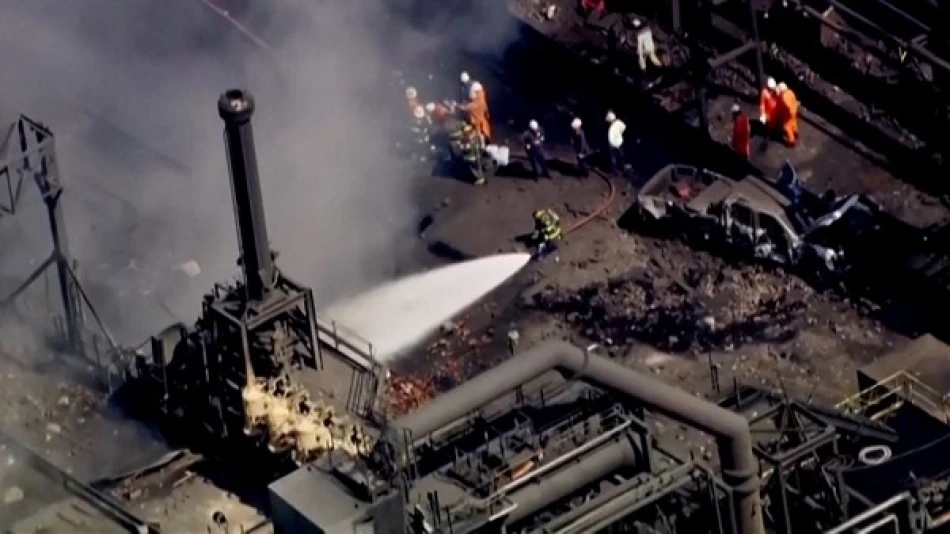
Deadly Explosion Rocks Pennsylvania Factory, Leaving One Dead and Two Missing
Fatal Explosion Rocks America's Largest Coke Plant as Industrial Safety Questions Mount
A devastating explosion at U.S. Steel's Clairton Coke Works in Pennsylvania has killed one worker, left two missing, and injured several others, highlighting persistent safety challenges in America's aging industrial infrastructure. The blast at the nation's largest coal processing facility underscores the inherent dangers facing workers in heavy industry as companies balance operational demands with safety investments.
The Clairton Disaster Unfolds
The explosion struck the Clairton Coke Works facility around 11:00 AM on Monday, August 11th, specifically targeting the plant's battery ovens where coal is converted into coke for steelmaking. Located approximately 25 kilometers from Pittsburgh along the Monongahela River, the facility employs roughly 1,300 workers and serves as a critical component in U.S. Steel's integrated production chain.
"As of now, officials can confirm one fatality related to this incident," said James Madalinski, spokesperson for Allegheny County Police. "Two people remain missing, and several individuals received treatment for injuries, though their current condition remains unknown."
Social media footage showed firefighters battling blazes amid thick white smoke clouds, while emergency crews worked to reach workers potentially trapped beneath debris from the damaged industrial building.
U.S. Steel's Safety Record Under Scrutiny
The incident places renewed focus on U.S. Steel's safety protocols at a time when the company faces mounting pressure from regulators and environmental groups. Andrew Falton, the company's media relations manager, confirmed that emergency teams were dispatched immediately, while CEO David Burritt pledged full cooperation with investigating authorities.
Coke production involves heating coal to extremely high temperatures in sealed ovens, creating an inherently hazardous environment where gas leaks, equipment failures, and structural weaknesses can trigger catastrophic explosions. The Clairton facility's age and scale amplify these risks, as older industrial infrastructure often requires more intensive maintenance and monitoring.
Broader Industrial Safety Implications
This explosion reflects broader challenges facing America's heavy industry sector, where aging facilities and cost pressures can create dangerous conditions for workers. The incident occurs as industrial accidents have drawn increased regulatory attention, particularly in chemical plants and refineries where similar explosion risks exist.
For U.S. Steel, the tragedy comes at a particularly sensitive time as the company navigates market volatility, environmental compliance costs, and competition from international producers. Any extended shutdown at Clairton could disrupt steel production across multiple facilities, potentially affecting supply chains and the company's financial performance.
Market and Regulatory Response Expected
The Occupational Safety and Health Administration will likely launch a comprehensive investigation, potentially resulting in citations, fines, and mandated safety improvements. Such incidents typically prompt broader industry reviews and can accelerate regulatory changes affecting similar facilities nationwide.
Investors will closely monitor the situation's impact on U.S. Steel's operations and liability exposure, while competitors may face increased scrutiny of their own safety protocols. The incident also reinforces arguments for continued investment in industrial safety technology and infrastructure modernization, even as companies face pressure to control costs in competitive markets.
 Layla Al Mansoori
Layla Al Mansoori







